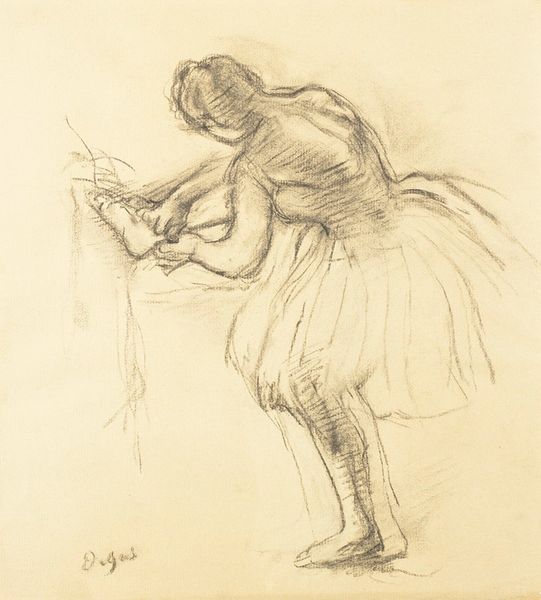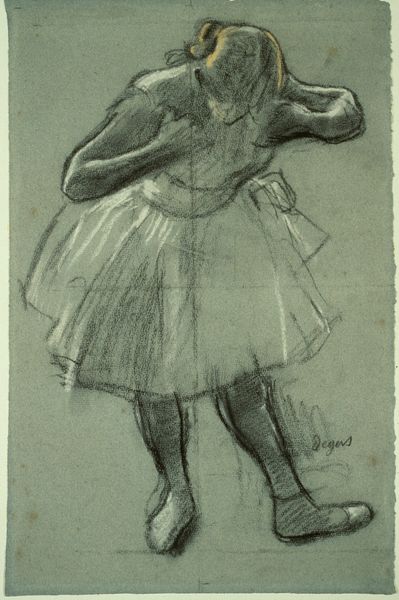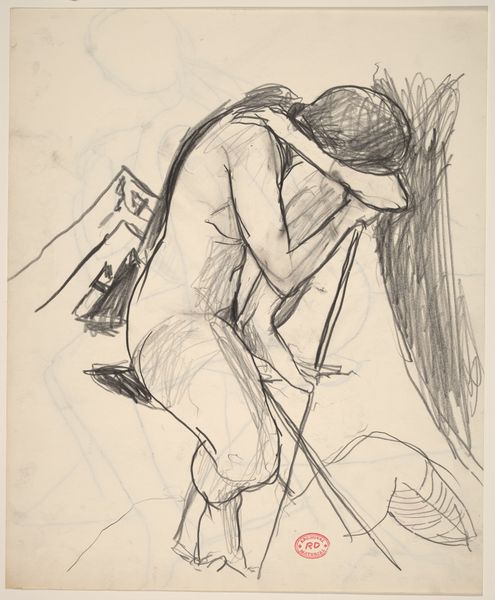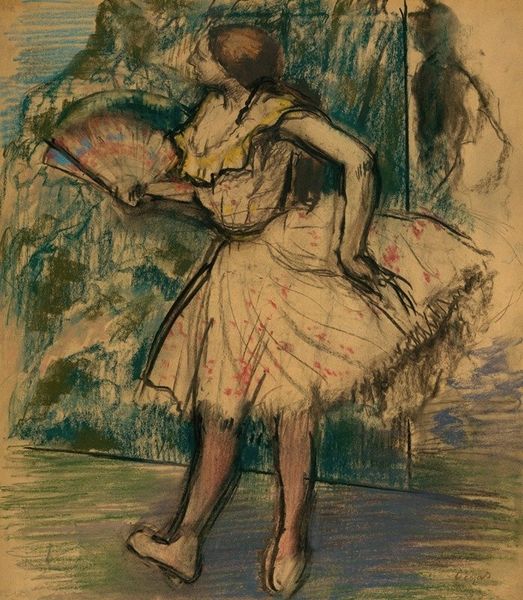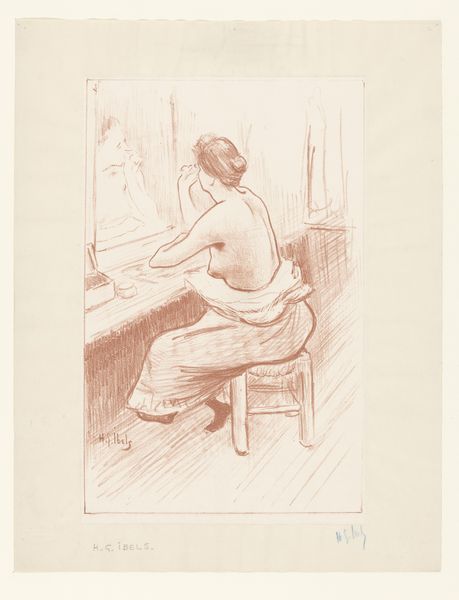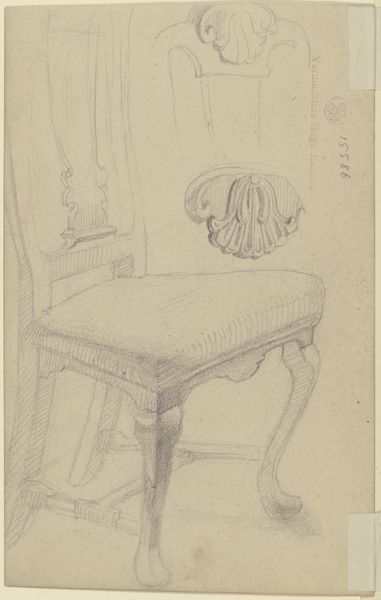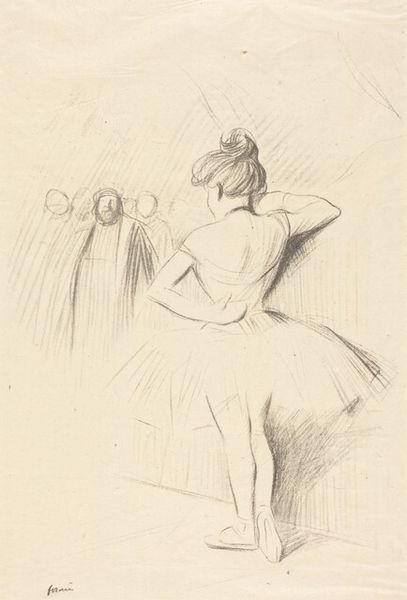
drawing, paper, pencil
#
portrait
#
drawing
#
pencil sketch
#
figuration
#
paper
#
pencil
#
modernism
Copyright: Public Domain
Editor: Here we have Richard Martin Werner's "Danseuse" from 1933, a pencil drawing on paper. The figure seems so caught up in her preparation; there's a real sense of quiet anticipation in this modernist portrait. What historical elements stand out to you? Curator: Well, looking at "Danseuse," I’m immediately struck by how Werner’s choice of subject matter aligns with broader cultural fascinations. Ballet, particularly the female dancer, had become a potent symbol in early 20th-century art, embodying ideas about femininity, spectacle, and the commodification of the body. The date is telling. This was produced between the wars: a time of political unease and rapid cultural change across Europe. What do you think the seemingly unfinished nature of this drawing signifies in that context? Editor: Perhaps that it is a glimpse behind the scenes? We're not seeing the polished performance, but the artist and dancer caught off guard. So how did society and institutions influence the art available at the time? Curator: Exactly. And the figure's posture – hunched over, attending to her shoe – pulls us away from idealized portrayals of ballerinas, popular since the Impressionists. Consider also the institutions exhibiting similar works, and which patrons had access. Artists depended on the cultural elite, and they often were pressured into representing safe or appealing themes. It's a powerful position! Do you think Werner succeeded at presenting ballet in a new light? Editor: I think so. It feels more intimate, less about public display. The looseness of the drawing contributes to that feeling. I appreciate learning how this drawing interacts with the societal views and anxieties of its time. Curator: Indeed. Analyzing art from this perspective allows us to reveal the complexities and nuances of the relationship between artistic creation and historical context. Thank you!
Comments
No comments
Be the first to comment and join the conversation on the ultimate creative platform.
